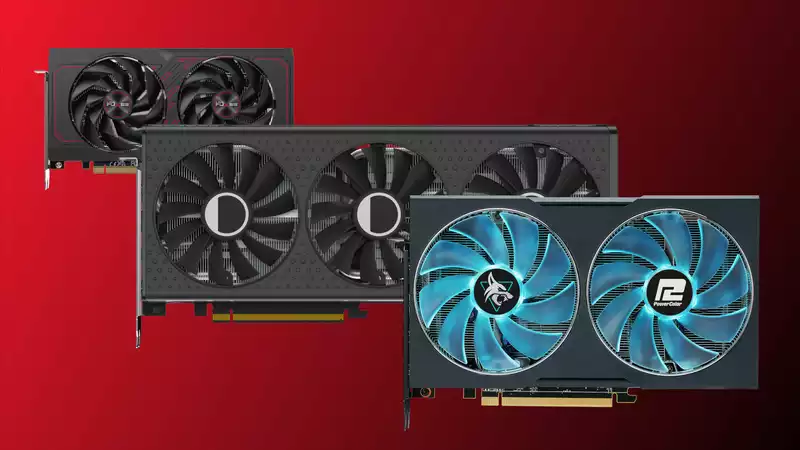AMD kicks off the year 2024 for its Radeon graphics card lineup with the RX 7600 XT, which features 16GB of GDDR6 VRAM and a slightly faster GPU clock speed. It uses the same Navi 33 graphics chip as the original Radeon RX 7600, so no shaders or memory controllers were added.
In other words, the new RX 7600 XT has 2,048 shaders and a 128-bit composite memory bus width, but AMD has increased the game clock by 220 MHz (from 2.25 to 2.47 GHz) and boost clock by 100 MHz (from 2.66 to 2.76 GHz), a 9.8% and 3.8% The VRAM clock, however, was not changed. However, the VRAM clock is unchanged, so the transfer rate remains at 18 Gbps.
Unfortunately, higher clock speeds and additional VRAM also mean higher power demands: while the RX 7600's total board power consumption is 165W, the RX 7600 XT's is pushed to 190W. Frankly, the 25W increase is nothing, and should mean that only one 8-pin PCIe power connector is needed.
I say "should" because it's not 100% clear from the various images of third-party models: no reference Radeon RX 7600 XT from AMD, only the likes of Sapphire, PowerColor, etc., but no secondary power cable is needed. It is safe to assume that.
Due to the combination of the higher clock and additional VRAM, AMD claims that the RX 7600 XT is 6-31% faster than the standard RX 7600 at 1440p. Of course, these figures are for very specific games, with the highest values listed for "Forza Horizon 5" when using maximum ray tracing settings
.
When chip vendors release new products, they usually like to highlight their performance by comparing them to very specific models of the competition; in the case of the RX 7600 XT, AMD oddly chose Nvidia's GeForce RTX 2060 from four years ago as its first comparison (RX 7600 XT). The reason for this odd choice is that 50% of the GPUs in the November 2023 Steam hardware survey are RTX 2060 or lower graphics cards.
Since the RTX 2060 is already two generations old, one would expect a new architecture to offer a significant performance boost, but AMD is clearly targeting PC gamers who are considering upgrading their GPUs this year. However, AMD is also pitching the RX 7600 XT to content creators with limited budgets, especially those using local generative AI systems.
Both Stable Diffusion and Llama prefer to access a lot of VRAM, but this is not a major factor for such systems to work well. The same can be said for video editing: sure, memory is important, especially for high-resolution projects, but simply doubling the VRAM will not turn the GPU into a creation monster.
AMD also claims that the RX 7600 XT is a much better GPU than Nvidia's GeForce RTX 4060, especially in games where FSR 3 upscaling and frame generation (or Fluid Motion Frames) can be enabled The RX 7600 XT is claimed to be a much better GPU than Nvidia's GeForce RTX 4060. In particular, it outperforms the Nvidia GeForce RTX 4060 in games where FSR 3 upscaling and frame generation (or Fluid Motion Frames) are enabled.
We're not saying AMD is making these numbers up (COD is known to run well on Radeon graphics cards), but a wider selection of games could tell a different story, what the RX 7600 XT is like, We won't know until we actually get it in our hands and test it.
We can expect all of the major Radeon vendors to offer one or two variants of the RX 7600 XT, which will be available for purchase on January 24, with SEP (suggested retail price) starting at $329, $60 more than the regular RX 7600.
Is it worth paying 22% more for 8GB more VRAM and a slight clock increase? It is difficult to answer this question as AMD's own benchmarks suggest that there is not enough performance gain to justify the additional money, but Nvidia's 8GB graphics memory, which is certainly below the price of the RTX 4060 Ti with the additional graphics memory. A full test of the new Radeon RX 7600XT ourselves will clarify.
_____________________________________ PC Gamer's CES 2024 coverage is courtesy of Asus Republic of Gamers.
.

Comments